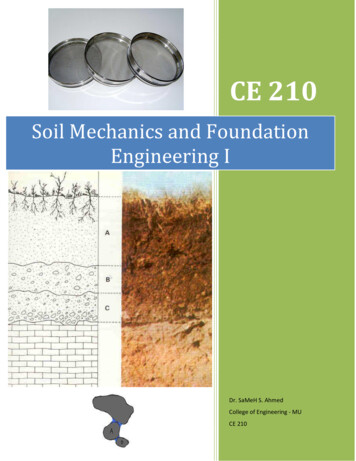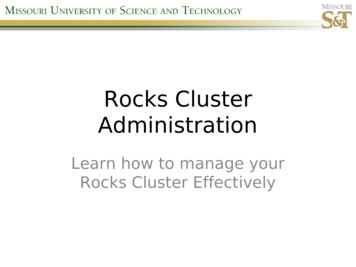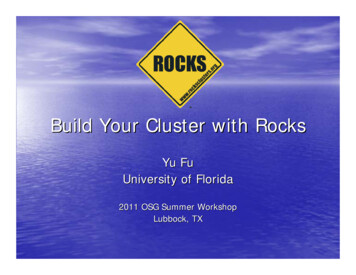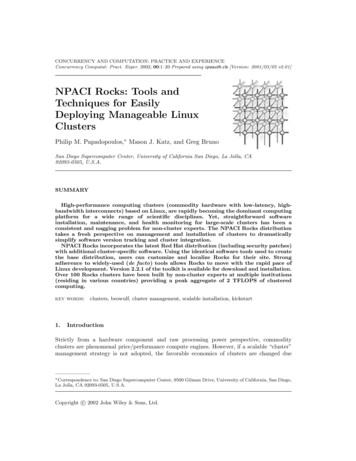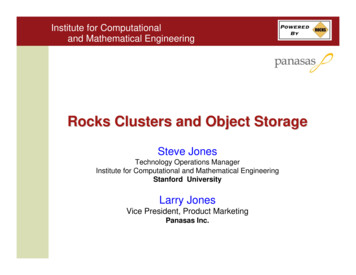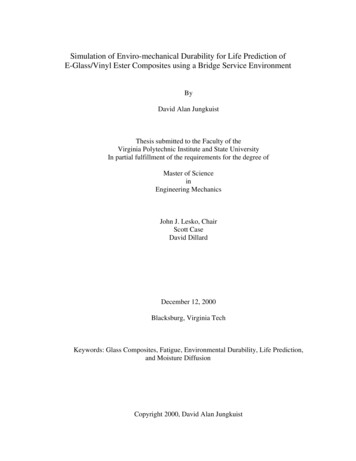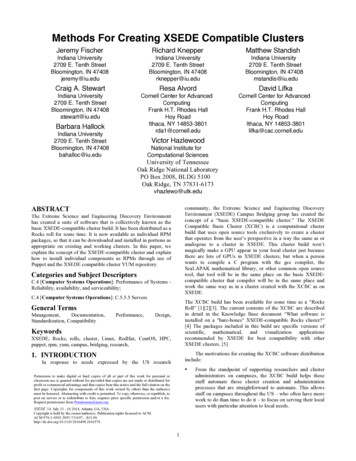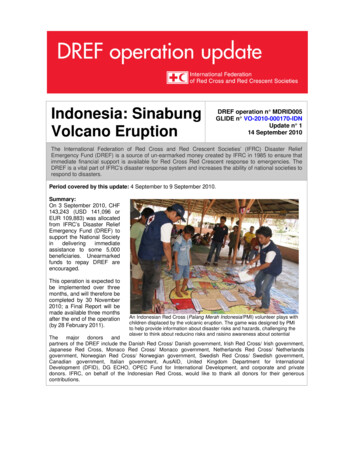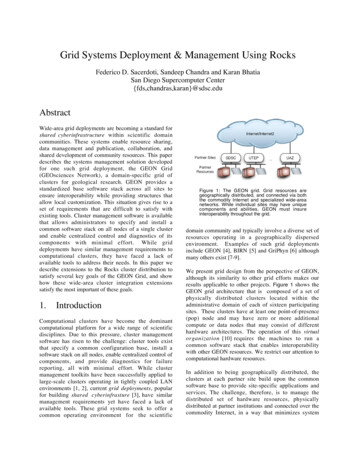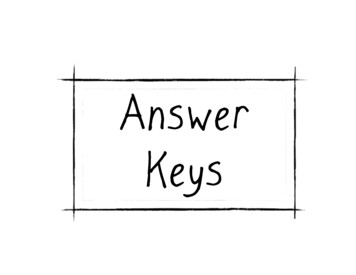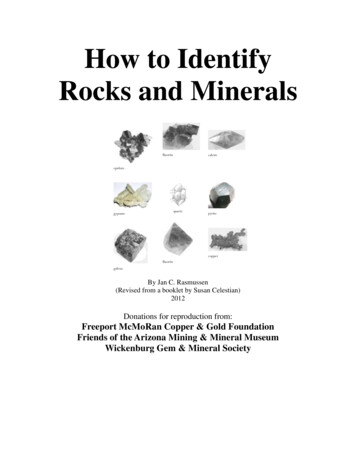
Transcription
How to IdentifyRocks and pperfluoritegalenaBy Jan C. Rasmussen(Revised from a booklet by Susan Celestian)2012Donations for reproduction from:Freeport McMoRan Copper & Gold FoundationFriends of the Arizona Mining & Mineral MuseumWickenburg Gem & Mineral Society
www.janrasmussen.comii
NUMERICAL LIST OF ROCKS & MINERALS IN KITSee final pages of book for color photographs of rocks and minerals.MINERALS:1 Talc2 Gypsum3 Calcite4 Fluorite5 Apatite*6 Orthoclase (feldspar group)7 Quartz8 Topaz*9 Corundum*10 Diamond*11 Chrysocolla (blue)12 Azurite (dark blue)13 Quartz, var. chalcedony14 Chalcopyrite (brassy)15 Barite16 Galena (metallic)17 Hematite18 Garnet19 Magnetite20 Serpentine21 Malachite (green)22 Muscovite (mica group)23 Bornite (peacock tarnish)24 Halite (table salt)25 Cuprite26 Limonite (Goethite)27 Pyrite (brassy)28 Peridot29 Gold*30 Copper (refined)31 Glauberite pseudomorph32 Sulfur33 Quartz, var. rose34 Quartz, var. amethyst35 Hornblende*36 Tourmaline*37 Graphite*38 Sphalerite*39 Biotite*40 Dolomite*www.janrasmussen.comIGNEOUS ROCKS:5051525354555657Apache METAMORPHIC ROCKS:60 Quartzite*61 Schist62 Marble63 Slate*64 Gneiss65 Metaconglomerate*66 Phyllite(20) (Serpentinite)*SEDIMENTARY ROCKS:70717273747576SandstoneLimestoneTravertine (onyx)ConglomerateBrecciaShaleSilicified Wood(Quartz, var. chert)77 Coal78 Diatomite* not generally in kits. Minerals numbered8-10, 25, 29, 35-40 are listed for informationonly.iii
ALPHABETICAL LIST OF ROCKS & MINERALS IN KITSee final pages of book for color photographs of rocks and minerals.MINERALS:Apatite*Azurite (dark blue)BariteBiotiteBornite (peacock tarnish)CalciteChalcopyrite (brassy)Chrysocolla (blue-green)Copper eGalena (metallic)GarnetGlauberite pseudomorphGold*Graphite*GypsumHalite (table salt)HematiteHornblendeLimonite (Goethite)MagnetiteMalachite (green)Muscovite (mica group)Orthoclase (feldspar group)PeridotPyrite (brassy)Quartz, var. amethystQuartz, var. chalcedonyQuartzQuartz, var. pache Serpentinite)*Shale*Silicified Wood(Quartz, var. chert)SlateTravertine 0)7576637255iv
Table of ContentsNUMERICAL LIST OF ROCKS & MINERALS IN KIT . iiiALPHABETICAL LIST OF ROCKS & MINERALS IN KIT . ivINTRODUCTION . 1ACKNOWLEDGEMENTS . 1INVENTORY OF TEACHER KIT CONTENTS . 3SUGGESTIONS FOR USING THIS TEACHER KIT . 4Level I (K-2) . 4Level I-II (3-4-5) . 5Level II (3-4-5) . 6Level III (6-7-8/Middle School or Junior High) . 7Level IV High School . 9PHYSICAL TESTS FOR MINERAL IDENTIFICATION . 10DEFINITION OF A MINERAL . 10COLOR . 10LUSTER . 10CLEAVAGE . 11FRACTURE . 14Types of Fracture: . 14CRYSTAL FORM . 15HARDNESS . 15STREAK . 17SPECIFIC GRAVITY . 17TENACITY . 17DIAPHANIETY . 18EFFERVESCENCE (FIZZ) IN ACID . 18OTHER TESTS . 18Taste: . 18Odor: . 18Magnetism:. 18Radioactivity: . 18Fluorescence:. 18MINERAL IDENTIFICATION TABLES . 19ROCK CYCLE . 23IDENTIFICATION OF ROCKS . 24SUMMARY OF ROCK TYPES . 24Igneous Rocks . 24Sedimentary Rocks. 25Metamorphic Rocks . 25Igneous, Sedimentary, or Metamorphic? . 26IGNEOUS ROCKS. 27Textures of Igneous Rocks . 27Characteristics of Important Minerals in Igneous Rocks . 27IGNEOUS ROCK IDENTIFICATION KEY . 28Igneous - glassy . 29Igneous - pyroclastic (fragmental ash and bombs fire particles) . 29www.janrasmussen.comv
SEDIMENTARY ROCKS . 30Clastic Sedimentary Rocks . 30Non-Clastic Sedimentary Rocks . 31SEDIMENTARY ROCK IDENTIFICATION KEY. 32Clastic Sedimentary Rocks Identification Key . 32Non-Clastic Sedimentary Rock Identification Key . 33Sediment Grain Sizes . 34METAMORPHIC ROCKS. 35Foliated (Banded) Metamorphic Rocks . 35Non-Foliated Metamorphic Rocks . 35METAMORPHIC ROCK IDENTIFICATION KEY . 36Foliated (banded) Metamorphic Rock Identification Key . 36Non-foliated Metamorphic Rock Identification Key . 37ROCK CLASSIFICATION CHART . 38NUMERICAL LIST OF ROCKS & MINERALS IN KIT . 39ALPHABETICAL LIST OF ROCKS & MINERALS IN KIT . 40DESCRIPTION OF ROCKS & MINERALS IN ALPHABETIC ORDER . 3722417357126APACHE TEARS (rock) . 41APATITE . 42AZURITE . 43BARITE . 44BASALT (rock) . 44BIOTITE . 44BORNITE . 45BRECCIA (rock). 46CALCITE . 46CHALCOPYRITE . 47CHRYSOCOLLA . 47COAL (rock) . 48CONGLOMERATE (rock) . 48COPPER . 48CORUNDUM . 49CUPRITE . 51DIAMOND . 51DIATOMITE (rock) . 52DOLOMITE . 53FLUORITE . 53GALENA . 54GARNET group . 55GLAUBERITE (A PSEUDOMORPH) . 55GNEISS. 56GOLD . 57GRANITE (rock) . 57GRAPHITE . 58GYPSUM . 59HALITE (salt) . 59HEMATITE . 60HORNBLENDE. 61LIMESTONE (rock) . 61LIMONITE (GOETHITE) . 62www.janrasmussen.comvi
19MAGNETITE . 6321MALACHITE . 6362MARBLE . 6465METACONGLOMERATE (rock) . 6422MUSCOVITE . 6554OBSIDIAN . 666ORTHOCLASE . 6628PERIDOT . 6753PERLITE. 6866PHYLLITE . 6852PUMICE (rock) . 6927PYRITE. 697, 13, 33, 34 QUARTZ . 7060QUARTZITE (rock) . 7256RHYOLITE (rock) . 7270SANDSTONE (rock) . 7261SCHIST (rock) . 7320SERPENTINE . 73(20)SERPENTINITE . 7475SHALE (rock) . 7476SILICIFIED WOOD (PETRIFIED WOOD) . 7463SLATE (rock) . 7538SPHALERITE. 7532SULFUR . 761TALC . 768TOPAZ . 7736TOURMALINE GROUP . 7772TRAVERTINE (―ONYX‖) . 7855TUFF . 78GLOSSARY OF TERMS . 79REFERENCES . 88EDUCATOR INTERNET RESOURCES . 90Web Resources . 90Mineral and Geology Museums in Arizona . 90Mineral Education Information and Resources . 90Mineralogy Links . 91Mineralogical Societies. 91Magazines for the Amateur Mineralogist and Lapidary . 91www.janrasmussen.comvii
INTRODUCTIONACKNOWLEDGEMENTSThis collection of Arizona rocks and minerals used to come to Arizona teachersthrough the efforts of many volunteers and organizations. The individual rockand mineral specimens had been donated to the Arizona Mining and MineralMuseum by:-Mineralogical Society of Arizona membersArizona Leaverites Rock & Gem SocietyZeox: White Cliffs Diatomite MineArizona Public ServiceAsarco Incorporated: Silver Bell Mine, Mission MineBarretts Minerals Inc., Dillon, MT (talc)Harborlite: Superior Perlite MinePeabody Western Coal Co.Freeport McMoRan Copper & Gold Inc., Morenci MinePinal Harvest: White Cross Gypsum MinePioneer Talc Co., Van Horn, TXTufflite Inc.The kits used to be assembled by Arizona Mining and Mineral Museumvolunteers. Many of these volunteers are members of rockhound and prospectingclubs in the Phoenix Valley. These people contribute many hours of their time tothis project and without them these kits would not be available.This booklet was written by the former museum Curator, Jan C. Rasmussen. Itincorporates material written by Susan Celestian, previous Curator, and suggestions byMary Graf of the Arizona Foundation for Resource Education (AFRE).ARIZONA MINING INDUSTRYArizona ranks first in non-fuel mineral production in the U.S. and produces morethan 65% of the Nation‘s domestic copper. The value of mineral output fromArizona in 2008 was near 7.8 billion. The Arizona mining industry directlyemploys tens of thousands of Arizonans. In addition to copper, Arizona alsoproduces gemstones, molybdenum, silver, gold, industrial minerals, and coal.www.janrasmussen.com1
Dear Arizona Educator,These kits were specially designed to aid Arizona‘s educators and their students asthey explore the world of rocks and minerals and mining. You‘ll find that the ArizonaScience Standard Strands 1 (Inquiry) and 6 (Earth & Space Science) can be directlyaddressed through the use of these materials. The recently revised Arizona Social StudiesStandard stresses knowledge of Natural Resources and Economics at all levels K-12, andthe kit can complement your teaching in this area as well, particularly with reference tothe uses of minerals and rocks. As you explore the materials, you‘ll find much contentinformation that matches your curriculum and will enrich your classroom instruction atany grade level.As a professional educator, you are an expert in designing content-rich learningexperiences for your students. The materials in this kit were planned to allow you toconstruct open-ended activities or more structured investigational labs.Somesuggestions for grade level appropriate use will be given in the first section.On the following pages are descriptions of the properties and uses of the rocks andminerals in the teachers‘ kit. The rocks and minerals are presented in alphabetical orderwith their assigned numbers shown to the left. Terminology can be referenced in theillustrated glossary of terms that is located at the end of the descriptive information.For more information about how to determine the name of a sample of unknownidentity, refer to the mineral key or the rock classification charts.It is our hope that the samples and information will be of use to you in yourclassroom explorations into the world of earth materials and mining.Thank you for your interest and dedication in sharing the exciting study ofgeology and mining with Arizona‘s students!Sincerely,Jan C. RasmussenJan C. Rasmussen, Ph.D., Registered GeologistCuratorwww.janrasmussen.com2
INVENTORY OF TEACHER KIT CONTENTSTeacher PAC - CD of Classroom ActivitiesArizona Rock Products - video“What on Earth” newspaper educational supplementMining Careers (SME) (if available)Copper Mining poster (if available)Gold Mining poster (if available)The Mining Industry and Minerals activities and informationFrom the Ground Up, Stories of Arizona’s Mines and Early Mineral Discoveriesbooklet by former Arizona Governor Jack WilliamsHow to Identify Rocks and Minerals – this booklet (also available in color atwww.mines.az.gov)Downtown Rocks (from Phoenix Downtown magazine Dec. 2003)Minerals in Unexpected Places in Everyday Life (Dept. Mines & Mineral Resourcesreprint)U.S. Geological Survey World Wide Web Information (USGS Fact Sheet 037-00,2000)Arizona Copper Facts small posterYour Car Comes from a Mine small posterYour House Comes from a Mine small posterMap to Museum45 Minerals, Rocks, or Fossilswww.janrasmussen.com3
SUGGESTIONS FOR USING THIS TEACHER KITBy Mary GrafCenter for Teacher Success(Formerly AFRE - Arizona Foundation for Resource Education )(website is www.azresourceed.org)Level I (K-2)Matches Arizona Science Standards Strand 6: Earth-SpaceGrades K-1, describing physical properties.Grade 2 not applicable.All are appropriate for ELL students for language and literacy growth.Pre-select any 10 kit minerals or rocks showing a wide variety of differences incolor, texture, etc. In small group or as a circle time activity, direct students to usetheir senses of sight and touch to explore all specimens. Encourage discussion, noright or wrong answers!Leave the rocks/minerals out on a tray for further exploration during free time.After exploring, chart their responses in two columns (sight and touch), acceptingany words (i.e. brownish, bumpy, rough, poky, pretty, dark, white and black,sparkly, etc.) Goal is vocabulary growth and describing properties of things, notexact scientific terms. Read their responses back frequently. Suggest vocabularyif children need a boost.From charted vocabulary words, print each descriptive word on a 3x5 'sense card'.(Draw a small eye for sight, hand for touch.) With specimens on display, read onecard at a time and select all rocks/minerals that match (i.e. dark, or smooth).Continue. Are there any that fit in more than one category?Using 'sense cards', read aloud and hand out each card to an individual student. Inturn, ask each student to select one specimen that best describes their word. Greatfor circle time!Non-readers can pair up with readers or older students to continue this on theirown.Make two cards, one YES, one NO card. Using the 'sense cards' one at a time,have students divide the specimens into two piles. i.e. ―shiny‖ YES and ―shiny‖NO. Introduce the prefix ―non-‖, for example, ―shiny‖ (YES) and ―non-shiny‖(NO). To expand, use two or more cards, for example: Shiny, dark and smooth(YES) and non-shiny, not dark and not smooth (NO).Arrange specimens lightest to darkest, smoothest to roughest, lightest (weight) toheaviest.www.janrasmussen.com4
Put blindfold on student, tell them ―I am thinking of something that is: bumpy,smooth, etc.‖, and using only their sense of touch, locate a specimen with thatproperty. OR, put some samples in a small bag or sock, and have child select thesample that you or other student describes. ―Which is the smoothest?‖ ―Whichfeels sandier?‖Level I-II (3-4-5)Levels I-II (and ELL, Special Ed in Level III as needed.)Students will have their own unique way of describing the specimens. Accept theirwords and suggest or rephrase as needed. The following chart lists words K-1 childrenhave used, and some additional vocabulary words you can introduce are shown in italics.This is a great way to introduce and review opposites! Explain to the students thateverything has properties. Properties tell about and describe a person or thing. Thewords they are using are the properties of the rocks and minerals.SIGHT (“I see.”)TOUCH/FEEL (“I feel.”)Different colors (listed)Soft-hard (introduce opposites)Red, white, etc. (any single color)Rough-smoothBlack and white (any mix of colorsHeavy-light (weight)Dark-lightPokySparklingBumpy (little or big bumps)Shiny-dull (introduce as opposites)Sandy, sandLike glass (glassy)SlickLayeredLike glass (glassy, glasslike)WavyDirty (earthy, clayey, clay like)Shows lines, has linesWavyLittle things in it (or medium or big)ChunkyChunks in itRibbedHoley, has holes in itPebbles, pebblyBubbles, bubbly, like a spongeSpinySquare, round, roundish (any shapes)Prickly, has pricklesThin-thickDifferent size stuff in itBig-little (comparisons)Pretty, fancyUgly, boringDiamond-y, diamond, diamond-dlikeJewel, jewel-likeMore or less (word here)Looks like metal, metallicDull, opaque, transparent, translucentwww.janrasmussen.com5
Students in upper grades (4-8) can compare their vocabulary with the actual scientificvocabulary used to describe mineral properties and descriptions of rocks. Use theiroriginal vocabulary to re-label with appropriate scientific and geological terms.Level II (3-4-5)Matches Arizona Science StandardsGrade 3 - Strand 6: Earth-Space (geology)Grade 4 - Earth processesGrade 4 - Arizona Social Studies StandardGrade 5 - Solar system/planetsAll are appropriate for ELL students for language and literacy growth.Any Level I activities may be adapted to grades 3-4-5 and are good for quickvocabulary building and review, especially with ELL students.Divide class into co-op groups of 5-6 each. Students develop their owndescriptions of all the specimens (or rock only, or mineral only, as you prefer).Compare lists together. Which words are the same in all teams? Which team hadthe most unique descriptive words for properties?Use more specimens, and divide into minerals and rock groups (minerals no. 139; rocks no. 50-78) as you teach the difference between minerals and rocks.As you teach the rock cycle, pull out the igneous/volcanic rocks from the kit (no.50-57). Use them as teaching aids.Planetary geology (5th grade) features volcanic rocks (especially lunar), withsedimentary features on Mars. Students research and find specimens from the kitthat have also been found in space!Pull out sedimentary (no. 70-78) and metamorphic rocks (no. 60-66, and 20) anduse as teaching aids.Develop a basic mineral ID chart (see the kit sample) using only a few properties(such as color, streak, hardness, metallic or non-metallic) for 5-6 mineral samplesyou have preselected that show large differences. (Example: sulfur, fluorite,quartz, chrysocolla, pyrite). Use their variety to teach the specific properties andhow they can vary from mineral to mineral.Make your own classroom ―Hardness Test Kit‖ (penny, nail, tile, small glass plate)to test for hardness on Moh's Hardness Scale.Have students divide and sort specimens into mineral and rock groups, and explainwhy.www.janrasmussen.com6
Make classroom posters of each rock group (igneous, sedimentary, metamorphic)and use the kit specimens as part of the display. (Place in small plastic bag andtape to the poster.)Use ―From the Ground Up‖ book in kit. Select a story(ies) to read aloud and havethe children illustrate.Using the ―From the Ground Up‖ book, individually or in peer pairs, assigndifferent selections; do a written or brief oral report, or oral ―living his
Leave the rocks/minerals out on a tray for further exploration during free time. After exploring, chart their responses in two columns (sight and touch), accepting any words (i.e. brownish, bumpy, rough, poky, pretty, dark, white and black, sparkly, etc.) Goal is vocabulary growth and des
